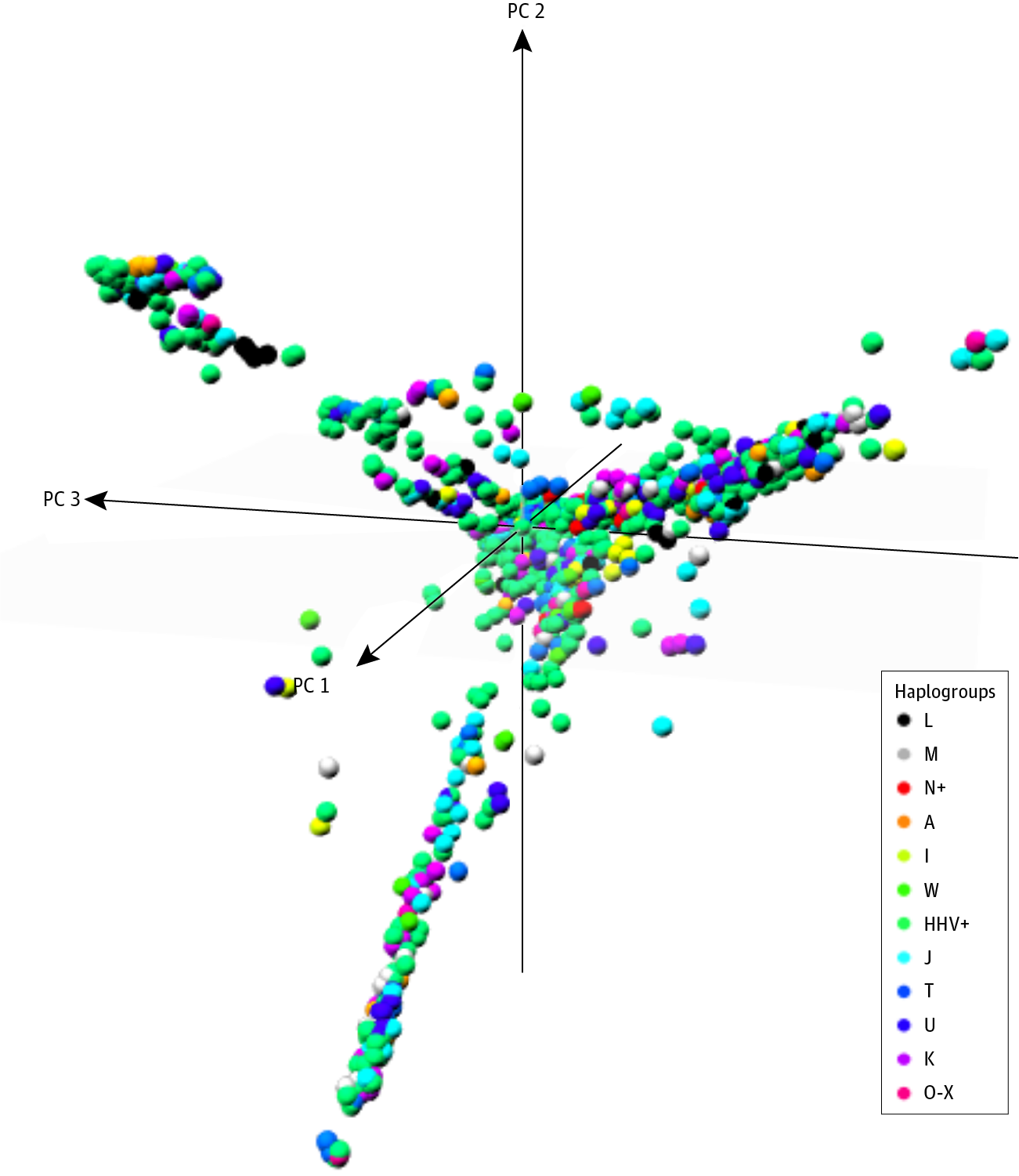JAMA Psychiatry ( IF 25.8 ) Pub Date : 2017-11-01 , DOI: 10.1001/jamapsychiatry.2017.2604 Dimitra Chalkia 1 , Larry N. Singh 2 , Jeremy Leipzig 3 , Maria Lvova 2 , Olga Derbeneva 2 , Anita Lakatos 4 , Dexter Hadley 5 , Hakon Hakonarson 5 , Douglas C. Wallace 6

|
Importance Autism spectrum disorders (ASD) are characterized by impairments in social interaction, communication, and repetitive or restrictive behavior. Although multiple physiologic and biochemical studies have reported defects in mitochondrial oxidative phosphorylation in patients with ASD, the role of mitochondrial DNA (mtDNA) variation has remained relatively unexplored.
Objective To assess what impact mitochondrial lineages encompassing ancient mtDNA functional polymorphisms, termed haplogroups, have on ASD risk.
Design, Setting, and Participants In this cohort study, individuals with autism and their families were studied using the Autism Genetic Resource Exchange cohort genome-wide association studies data previously generated at the Children’s Hospital of Philadelphia. From October 2010 to January 2017, we analyzed the data and used the mtDNA single-nucleotide polymorphisms interrogated by the Illumina HumanHap 550 chip to determine the mtDNA haplogroups of the individuals. Taking into account the familial structure of the Autism Genetic Resource Exchange data, we then determined whether the mtDNA haplogroups correlate with ASD risk.
Main Outcomes and Measures Odds ratios of mitochondrial haplogroup as predictors of ASD risk.
Results Of 1624 patients with autism included in this study, 1299 were boys (80%) and 325 were girls (20%). Families in the Autism Genetic Resource Exchange collection (933 families, encompassing 4041 individuals: 1624 patients with ASD and 2417 healthy parents and siblings) had been previously recruited in the United States with no restrictions on age, sex, race/ethnicity, or socioeconomic status. Relative to the most common European haplogroup HHV, European haplogroups I, J, K, O-X, T, and U were associated with increased risk of ASD, as were Asian and Native American haplogroups A and M, with odds ratios ranging from 1.55 (95% CI, 1.16-2.06) to 2.18 (95% CI, 1.59-3) (adjusted P < .04). Hence, mtDNA haplogroup variation is an important risk factor for ASD.
Conclusions and Relevance Because haplogroups I, J, K, O-X, T, and U encompass 55% of the European population, mtDNA lineages must make a significant contribution to overall ASD risk.
中文翻译:

线粒体DNA单倍群变异与自闭症谱系障碍之间的关联。
重要性 自闭症谱系障碍(ASD)的特征是社交互动,沟通以及重复或限制性行为受到损害。尽管多项生理和生化研究已报道ASD患者线粒体氧化磷酸化存在缺陷,但线粒体DNA(mtDNA)变异的作用仍未得到充分研究。
目的 评估包含古代mtDNA功能多态性(称为单倍群)的线粒体谱系对ASD风险的影响。
设计,环境和参与者 在这项队列研究中,使用以前在费城儿童医院生成的自闭症遗传资源交换队列全基因组关联研究数据对自闭症患者及其家庭进行了研究。从2010年10月到2017年1月,我们分析了数据,并使用了Illumina HumanHap 550芯片询问的mtDNA单核苷酸多态性,确定了个体的mtDNA单倍群。考虑到自闭症遗传资源交换数据的家族结构,然后确定mtDNA单倍型是否与ASD风险相关。
主要结果和量度 线粒体单倍型的几率作为ASD风险的预测指标。
结果 纳入本研究的1624例自闭症患者中,男婴1299例(占80%),女婴325例(占20%)。自闭症遗传资源交换馆藏中的家庭(933个家庭,包括4041个个体:1624名ASD患者和2417名健康父母和兄弟姐妹)以前在美国招募,不受年龄,性别,种族/民族或社会经济地位的限制。相对于最常见的欧洲单倍群HHV,欧洲单倍群I,J,K,OX,T和U与亚洲和美国原住民单倍群A和M的ASD风险增加相关,比值比范围为1.55(95 %CI,1.16-2.06)至2.18(95%CI,1.59-3)(调整后P <.04)。因此,mtDNA单倍体变异是ASD的重要危险因素。
结论和相关性 由于单倍群I,J,K,OX,T和U涵盖了欧洲55%的人口,因此mtDNA谱系必须对整体ASD风险做出重大贡献。


























 京公网安备 11010802027423号
京公网安备 11010802027423号